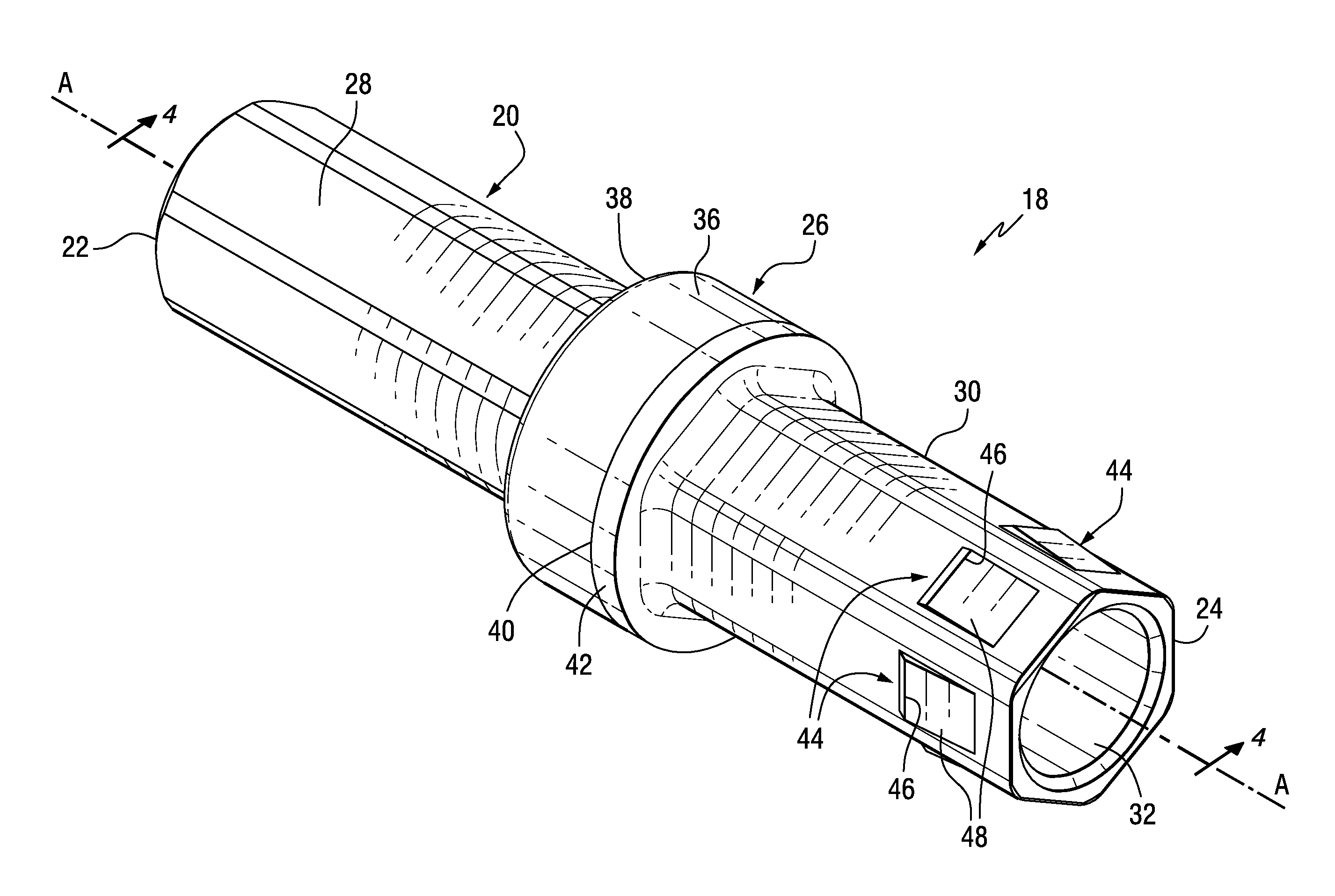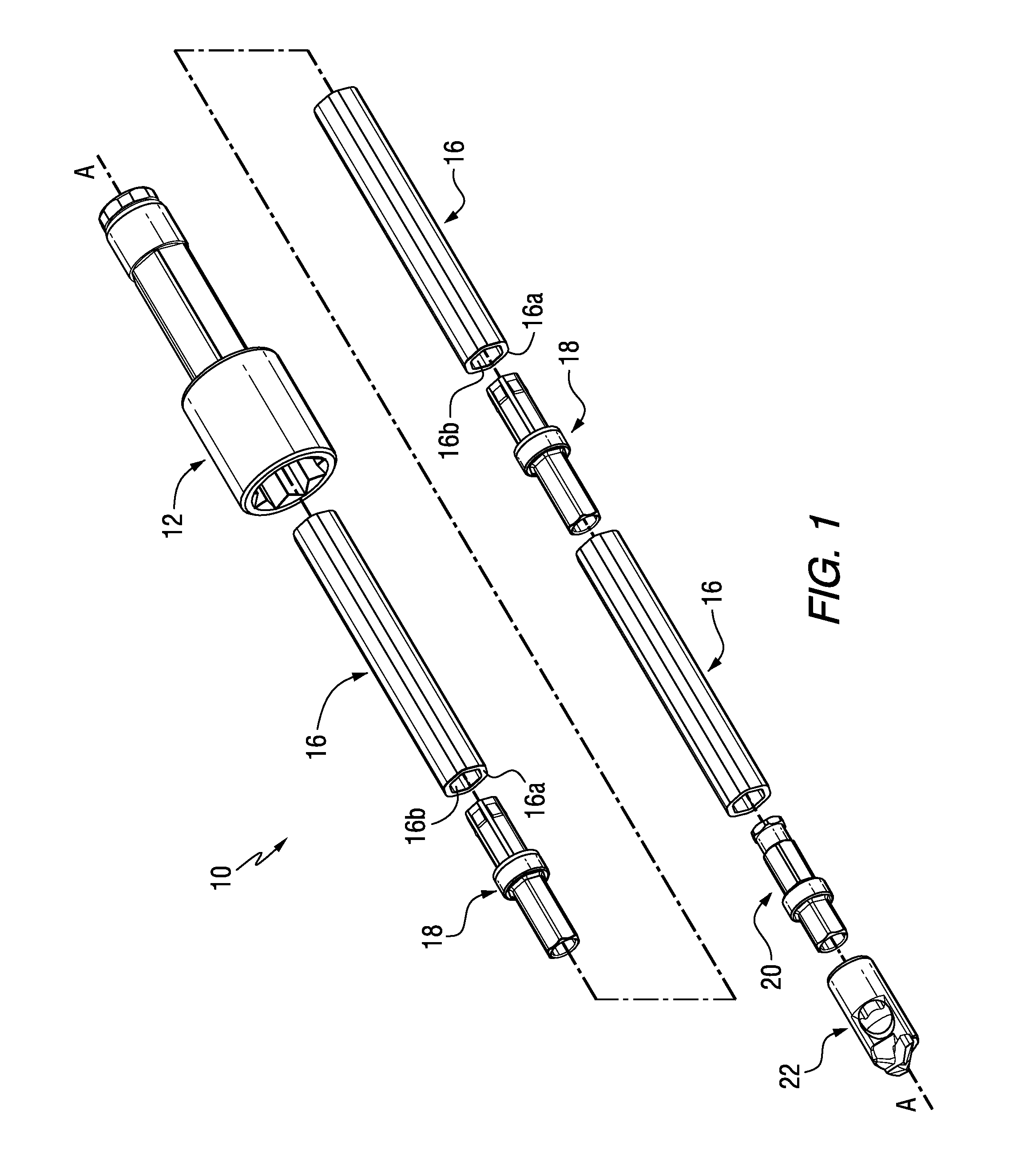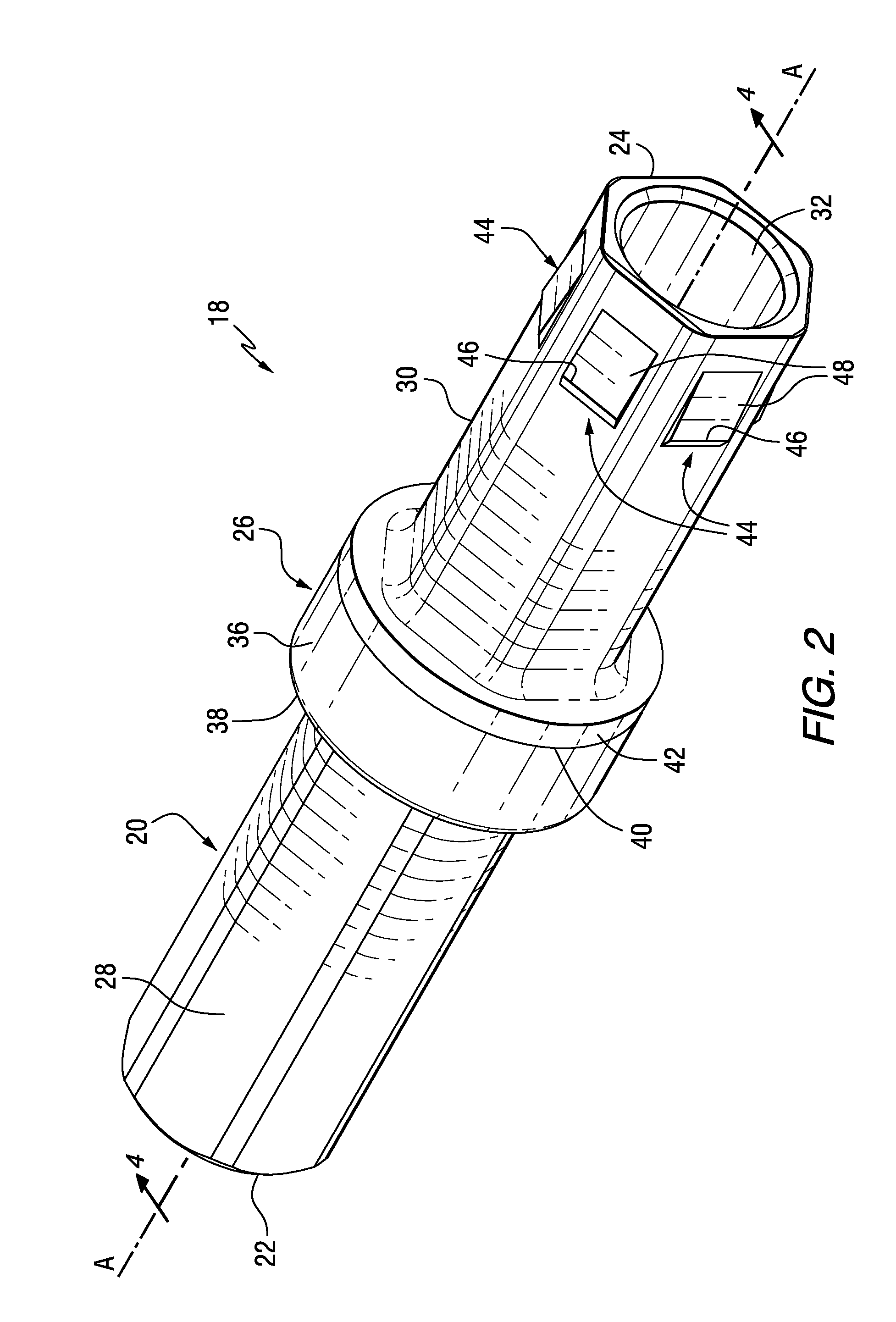Coupler for a rotatable cuttter assembly
- Summary
- Abstract
- Description
- Claims
- Application Information
AI Technical Summary
Benefits of technology
Problems solved by technology
Method used
Image
Examples
Embodiment Construction
[0016]In accordance with an aspect of the invention, there is provided a coupler for a rotatable cutter assembly. The rotatable cutter assembly may be any such type of assembly, but for exemplary purposes only a rotatable cutter assembly in the form of a roof bolt drill assembly 10 (see FIG. 1) is described and illustrated herein. Thus, it will be appreciated that the invention is not limited to a roof bolt drill assembly.
[0017]As will be appreciated from the description and drawings set forth herein, the invention advantageously provides for reduced noise during a drilling operation, as well as, improved mechanical durability and flexibility of the roof bolt drill assembly during the drilling operation.
[0018]Referring to the drawings, FIG. 1 illustrates the rotatable cutter assembly (e.g. a roof drill bit assembly 10) of the invention. The roof drill bit assembly 10 includes a chuck adapter (or chuck) generally designated as 12, one or more sections of drill steels each one of whic...
PUM
 Login to View More
Login to View More Abstract
Description
Claims
Application Information
 Login to View More
Login to View More - R&D
- Intellectual Property
- Life Sciences
- Materials
- Tech Scout
- Unparalleled Data Quality
- Higher Quality Content
- 60% Fewer Hallucinations
Browse by: Latest US Patents, China's latest patents, Technical Efficacy Thesaurus, Application Domain, Technology Topic, Popular Technical Reports.
© 2025 PatSnap. All rights reserved.Legal|Privacy policy|Modern Slavery Act Transparency Statement|Sitemap|About US| Contact US: help@patsnap.com



